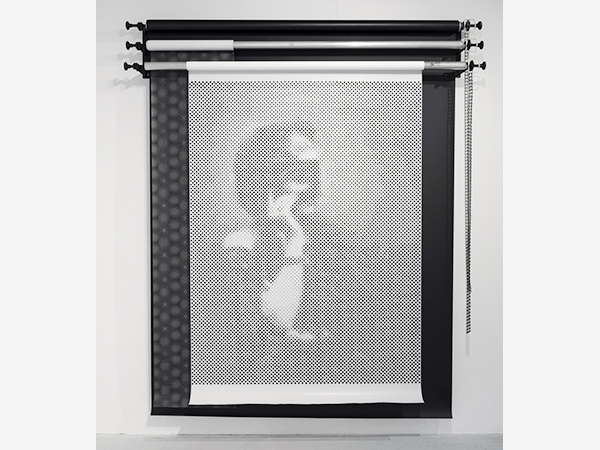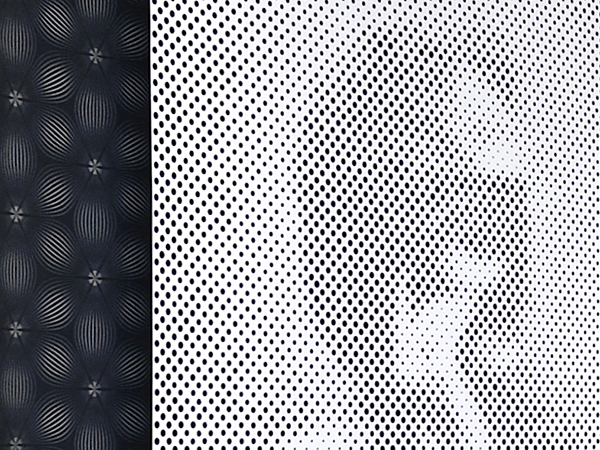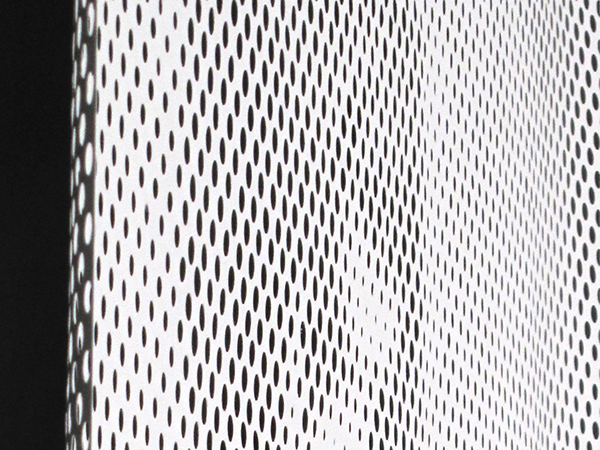ISABELLE LE MINH ▼▼▼ WORKS
PEIRCING
2015
--------------------------------------------------------------------------------------------------------
Installation : Photo studio backdrop, wallpaper, hand-pierced photograph
About 250 x 220 cm




This installation highlights the paradoxical manner in which a halftone screen forms an image when it is seen from afar while it becomes illegible when observed closely, just like digital images on our screens. The photograph this work refers to was made in 1860 and can be found in all photography history books, it is unmistakably the most famous portrait of the Countess of Castiglione who regularly visited, for almost 40 years, Mayer and Pierson's studio in Paris to get her portrait taken. Orchestrating these photo-shoots with many accessories, costumes and staging - a rather uncommon thing at the time - she became one of the most photographed women of the 19th century. Today, she is considered as a daring artist who might have invented the art of performance and photographic autofiction.
In this installation, the Castiglione halftone screen image emerges from a regular contemporary photo studio backdrop, the halftone screen being made by a multitude of holes pierced into a light grey panel allowing for the black backdrop to appear behind it.
The birth of photomechanical reproduction processes was concomitant to the invention of photography since Niepce was the first to successfully record a photographic image (1826) but also to reproduce an etching. However, the halftone screen image only appeared in the 19th century with the invention of various photomechanical processes such as the heliographic print, an ancestor to the offset print that was developed in 1870. But as an image formed by the juxtaposition of discreet dots, it seems to me conceptually and semiotically closer to digital photography than to silver print, since it can be created with no continuity with its referent, which makes it more of an icon than an index, according to the terminology established by the semiologist Charles Sanders Peirce.